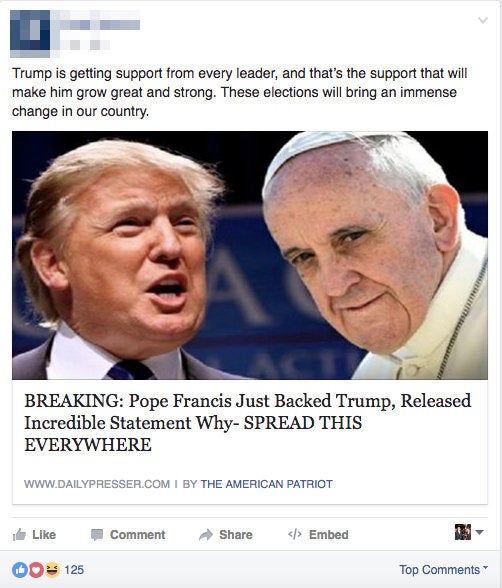
Despite recent outbursts by politicians, fake news is neither a recent development nor necessarily ubiquitous. It’s an ancient battlefield covered with the weapons of thousands of years of rhetoric and debate. This is because one of the earliest methods of subverting an enemy’s opinion was to call it wrong or evil. When we disagree with someone, it is easy to label it wrong or evil and give a reason for disagreeing rather than understanding. We are all guilty of subversion rather than consideration.
If we’ve been debating for thousands of years, then why are we no closer to finding the truth? Well, we are. We have made, and continue to make, enormous strides in solving questions through new ideas and processes, like the scientific method. But we don’t use the scientific method to write news articles. In fact, anyone can write and share their opinion, regardless of their credentials or perspective. We all add to the maelstrom that is social media with our opinions and argue until words mean nothing at all. Or as Prince Hamlet says: “Words words words … There is nothing either good or bad, but thinking makes it so.” So, if there is neither good or bad, only our thoughts, how can we better understand our world and stop merely disregarding the opinions of others?

According to Jonathan Haidt, a moral psychologist at the NYU Stern School of Business, this is a completely normal human tendency. When we read an article or story we are already inclined to feel one way or another about it, or what Haidt refers to as “confirmation bias”: “The tendency to seek out and interpret new evidence in ways that confirm what you already think. People are quite good at challenging statements made by other people, but if it’s your belief, then it’s your possession — your child, almost — and you want to protect it, not challenge it and risk losing it.”
Additionally, certain keywords and anecdotes determine how we will react. Only then, after we already feel a way about a subject, we come up with validation and justification for our emotional reaction. Haidt calls this the “Rider and Elephant”: “The rider is our conscious reasoning—the stream of words and images of which we are fully aware. The elephant is the other 99 percent of mental processes—the ones that occur outside of awareness but that actually govern most of our behavior.”
According to Haidt and other moral psychologists, when we read an article we think a certain way about it without any actual participation of our conscious minds. This is because words and ideas in it will appeal, subconsciously, to us on several levels and the “elephant” part in us will determine our reaction to that article. Only after the elephant has determined its reaction will the conscious part of our minds create reasons for that reaction.
Haidt outlines six moral foundations the “elephant” part of us uses to determine whether we agree with an action or idea. These foundations are inextricable from their opposites. They include: Care/Harm, Fairness/Cheating, Loyalty/Betrayal, Authority/Subversion, Sanctity/Degradation and Liberty/Oppression.
When an author or politician has a point to make they appeal to one or more of these foundations in order to pull a reaction out of an audience. Haidt demonstrates that different parts of the political spectrum appeal to different moral foundations.
In order to create an emotional reaction in people, both politicians and “news” outlets use words and ideas that rely on these six moral foundations. For example, some politicians demonstrate their “Care” for immigrants, minorities, and of course, women. Other politicians exploit the “Harm” foundation, which resonates much stronger with other groups of people. Those websites and politicians may preach that immigrants are criminals, rapists and drug dealers who harm innocent Americans or make the case that liberal universalism results in damaging trade agreements that harm the American worker.

When one reads an article on the Huffington Post about Donald Trump certain words will be used to evoke a response in the reader without any action on our part. Yet, an article in Breitbart on that same topic may use different words to evoke a different reaction. Neither of these articles is necessarily wrong or fake but neither necessarily tells the story in a factual or truthful way. What they do is use words or connotations to appeal to different moral foundations and elicit a response. What this means is that two “news” outlets can cover the exact same story but appeal to their distinct audiences (and what they want) using tactics that appear to be undeniably true to those audiences.
For example, the recent “fake news” story of Donald Trump’s Russian connection has been covered in varying ways by these two organizations.
On the one hand, Breitbart presents it as a possible blackmail piece that threatens the sovereignty of Israel: “The alleged blackmail information that U.S. officials reportedly warned Israel about seems to be in part referencing details contained in a debunked document of mysterious origin purporting to be an intelligence report alleging that Russia collected compromising videos and information on Trump.”
On the other hand, the Huffington Post quotes President Obama and projects an effort to “protect democracy”: “My expectation and my hope is that this work will continue after I leave, that Congress in possession of both the classified and unclassified reports, that the president-elect and his administration ― in possession of both the classified and unclassified reports ― will take it seriously and now get to work reinforcing those mechanisms that we can use to protect our democracy.”
Each of these triggers different moral foundations. The former creates a sense of betrayal and cheating while the latter manifests the subversion. But which story is true? The answer is nuanced in that neither of these stories is telling the whole truth but they are both, likely, telling part of the truth.
Now some of this is attributable to the idea that truth itself is a difficult, or even impossible, challenge for a finite species like our own. Because we are finite and limited, we see right and wrong (and right and left) as a dichotomy that dictates what we see as right and what they see as wrong. This is because we are so willing to see the wrongness in the actions and ideas of others but so unwilling to see the wrongness in our own. This is not a contemporary or scientific truth but one that has been relayed by great thinkers for millennia.
“It is easy to see the faults of others, but difficult to see one’s own faults.” – Buddha
This leaves us with the challenge of finding what is true. Like all things in life, truth is nuanced and sometimes even paradoxical.
“We must remember we are only mortal men, and we ought to accept the tale which is probable and enquire no further.” – Plato’s Timaeus
If we have access to at least two sides of every story we have to look for what is probably true by comparing these oppositional sides rather than just accepting one of them. Probabilistically speaking: the more information you take into account (and understand) the more likely it is that you have the right information (or the truth). Additionally, the more information we take into account and evaluate, the more capable we will be to induce whether that information accurately depicts the world. This is called consensus.
The question remains: How do we evaluate a work and seek out the truth that it does relate? We start by identifying a writer’s premises and goals. We look for implicit and explicit bias and determine if the information accurately depicts the wideness of reality or if it merely demonstrates the narrowness of an individual’s perspective. We look at their sources to discover advocacy. We look at the words they use and the words they do not use. When we evaluate an author or work, we look for the reaction that writer hopes to raise in us, and then try to avoid that reaction. Finally, the easiest way to do these things is to read alternative and contrasting opinions and sources.
For example: using our previous Breitbart vs. Huffington Post coverage, we can know only that the intelligence community (FBI) received an unverified document suggesting that the President-Elect had a rendezvous in Russia.
That’s it. We don’t know the veracity of those claims but that is not what constitutes “fake news.” The “fake news” is that the Huffington Post and Breitbart both draw conclusions that trigger emotional responses rather than presenting what is known plainly and without projection.
It is imperative to democracy that we stop labeling what we disagree with as “fake news” because access to the truth is what defines an informed individual who will make informed decisions, and a population of informed citizens is what makes the strongest possible democracy. The goal is to remove biased certainty from information by incorporating disagreement. This creates consensus that accounts for diversity and increases the probability that our understanding will be accurate.
